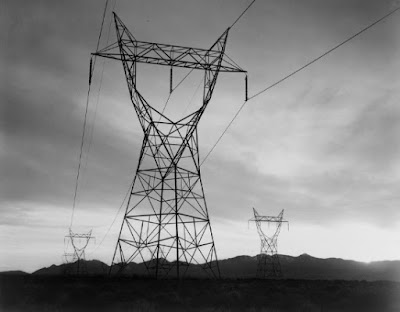In principle, of course transmission lines can be rated in kW. There is some upper limit as to the power they can transmit. If the Power exceeds that power level then the lines would overheat, leading to breakdown of insulation and perhaps to the lines melting.
But such a method of rating is pretty impractical. (Why impractical?)
The kW or MW load on a transmission line varies, literally from one instant to the next. Any rating of maximum sustained load could be exceeded on an instantaneous basis, or even for a short time, without causing too serious damage to the system though perhaps weakening it for the future. So there could be an instantaneous current spike perhaps several times higher than the rated steady-state current.
So instead Power Grids are rated by voltage, which is essentially constant throughout the system. Because the limiting factor for most transmission lines is the insulation withstand voltage, the insulator size and materials and the air spacing between conductors and the distance above the ground.
The same voltage is always used on a given line and does not vary significantly but the power changes as per load. Knowing the intended operating voltage along the grid allows specifying wire insulation and pole insulators and line-to-line insulators whose breakdown capacity and arc-over capacity is several times the expected voltage. This level of isolation is typically more than adequate to handle the heating effect of the maximum currents that the system will ever carry.
Throughout the power system, up to an including the smallest end user, everything is rated in terms of voltage from many hundreds of thousands of volts on a high voltage line, down to the five volts used to charge our cell phone. At all times, in every device, there is also some kind of wattage load, and sometimes that too is stated in specifying operating ratings or maximum ratings. But the wattage is typically secondary in consideration, because it is variable and because often the wattage is zero i.e. when a device is not in use. But the voltage is always there; ready to deliver power on demand.
Moreover, it is typically the voltage which presents the greater danger. Wattage is dangerous only over a period of time, as in the time taken to heat up a device, and the time it takes to burn your hand or arm if you are touching the energized device. The harm that voltage can cause is instantaneous, regardless of whether an applied device is operating or not.
So we can see that rating transmission lines by voltage is far more sensible than rating it by wattage. Thank you!

Sir the way of explanation was so easy.these are the basics that every electrical student should know about it.Thank you for such a great explanation.
Thank you Anisha! Request you to share this page if you like it so that more and more students can be reached.
All the questions which I Had in my mind have been clarified on your page. Thanks a lot! If it is possible for you to post online lectures or theory on machines and power systems, It would be awesome.
You can visit my channel. Though there are very few videos but I am trying to increase the inventory.